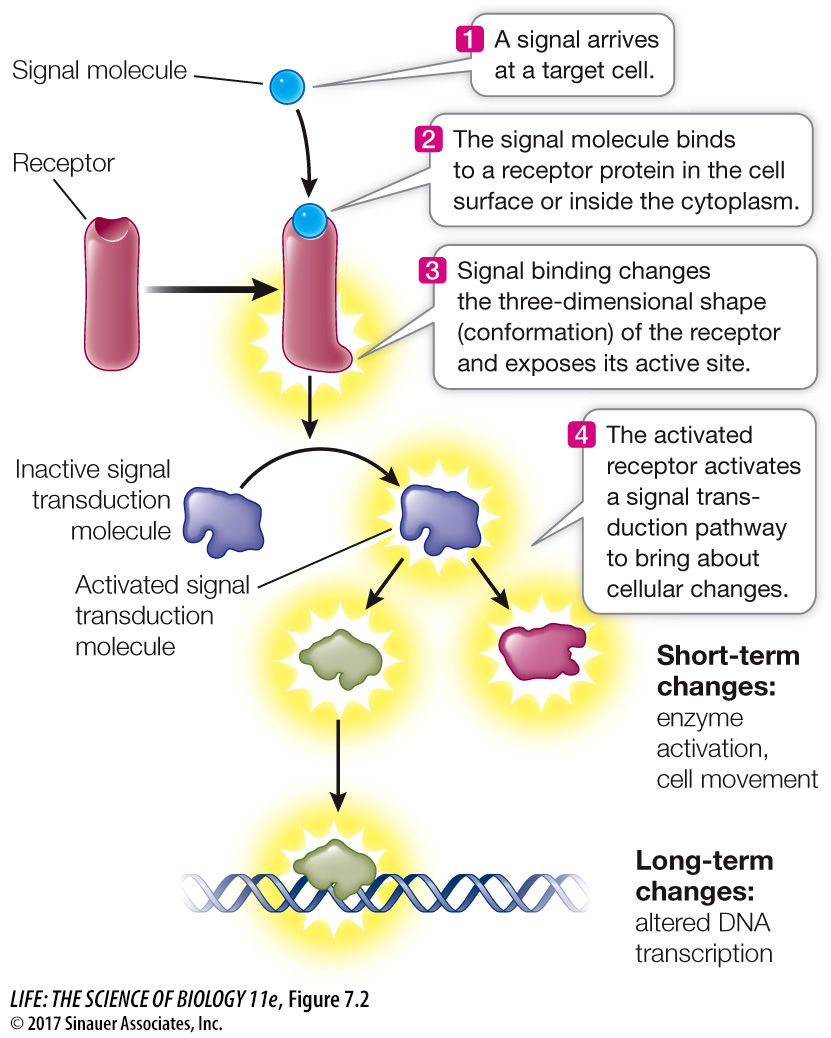A signal transduction pathway involves a signal, a receptor, and responses: Overview
As you saw in the opening story, the elements of a signal transduction pathway are a signal, a receptor, and a response (Figure 7.2). For the information from a signal to be transmitted to a cell, the target cell must be able to receive the signal and respond to it. This is the job of receptors. All cells may be exposed to a chemical signal, but most cells in the organism may not be able to respond to it. Only cells with the appropriate receptors can respond.
133

The response can involve enzymes, which catalyze biochemical reactions, and transcription factors, which are proteins that turn the expression of particular genes on and off. An important feature of signal transduction is that the activities of specific enzymes and transcription factors are regulated: they are either activated or inactivated to bring about cellular changes (see Figure 7.2). For example, an enzyme may be activated by the addition of a phosphate group (phosphorylation) to a particular site on the protein, thereby changing the enzyme’s shape (see Figure 3.13B) and exposing its active site. The activity of a protein can also be regulated by mechanisms that control its location in the cell. For example, a transcription factor located in the cytoplasm is inactive because it is separated from the genetic material in the nucleus; a signal transduction pathway may result in the transport of the factor to the nucleus, where it can affect gene expression.
In this chapter we’ll consider signal transduction pathways in isolation from one another. In life, however, signal transduction pathways are often interconnected. A great deal of crosstalk—interactions between different signal transduction pathways—